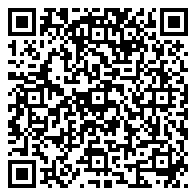
The cuisines of some of Yunnan's more prominent ethnic minorities such as the Hui, Dai, Yi, Bai and Hani can be found at restaurants scattered throughout Kunming, but if you're in search of Tibetan food, there's only one place to go – Kunming's Tibetan street, aka Lingjiaotang Lu (菱角塘路). As far as we can tell, all of the city's Tibetan restaurants are located on this quiet little road in the Xishan district.
The largest, best-known and most expensive of the bunch is Makye Ame, which offers a broad selection of food from different parts of Tibet. These range from a spinach dish similar to Indian saag to yak meat cooked on hot stones to whole roasted legs of lamb accompanied by traditional Tibetan-style knives for carving.
Makye Ame also features very "festive" Tibetan song and dance performances every night, but it is possible to escape from the din in an intimate second level tea room. Part of a chain with locations in Lhasa and Beijing, Makye Ame is not bad for festive occasions, but with many dishes priced between 50 to 100 yuan, it does not come cheap.
If you're looking for something a little more on the cheap and cheerful end of the spectrum, there are several yak butter teahouses along Lingjiaotang Lu that serve up decent Tibetan-style food without the song and dance.
Having little experience with Tibetan food, we recently stopped by Lingjiaotang Lu in search of lunch. Based upon its comparatively welcoming décor and the fact that it actually has a menu (Chinese only) we decided on Xiangbala Yak Butter Teahouse (香巴拉酥油茶馆), a small restaurant a few doors east of Makye Ame.
For most non-Tibetan palates, yak butter tea, which is made from yak butter and salt or sugar mixed into warm tea, is an acquired taste. It is a hearty beverage that is more suited to the Tibetan plateau than lunch in Kunming, but if you're looking for a little adventure or variety when eating out, it is an interesting departure from pu'er or green tea.
We ordered a big pitcher of salty yak butter tea (20 yuan), which was too much for only three people – it probably would have been sufficient for five to six. Not wanting to waste it, two of us did our best to finish it off during the meal. Note: unlike other teas, there is definitely a limit to how much yak butter tea the average person can consume in one sitting.
For our food we ordered Tibetan cheese curds fried in yak butter (酥油炒奶渣, 22 yuan), deep-fried yak jerky (牦牛干巴, 25 yuan) pan-fried baba bread (油煎粑粑, five yuan), stir-fried mu'er (素炒木耳, 10 yuan), stir-fried spinach (素炒菠菜, 6 yuan) and cold cucumber with spicy dressing (凉拌黄瓜, 6 yuan). The last three dishes, like many on Xiangbala's menu, are not Tibetan dishes – if you want to only eat Tibetan food, the staff is happy to recommend items from its stable of specialties.

The plate of cheese curds was definitely the most adventurous dish on our table. Simultaneously salty, sweet, sour and smoky, this is an unusual taste experience that can catch one's taste buds off guard. The unleavened baba bread was a nice change from rice, and the yak jerky was less salty (and flavorful) than its beef cousin.
All told, our lunch was an interesting diversion from the typical meal in Kunming, but next time we'll probably need to explore some other dishes to maintain our interest.
© Copyright 2005-2024 GoKunming.com all rights reserved. This material may not be republished, rewritten or redistributed without permission.











Comments
Hi there, intend to go and sample some more Yak - it is very tasty, had it in Lahsa, but you do get used to yak butter tea!! Definately going next time im in Kunming.
Login to comment